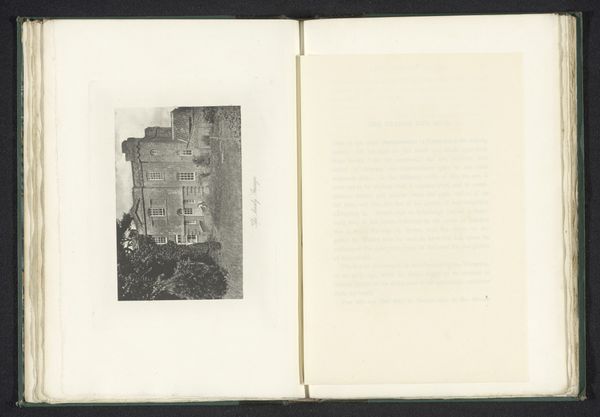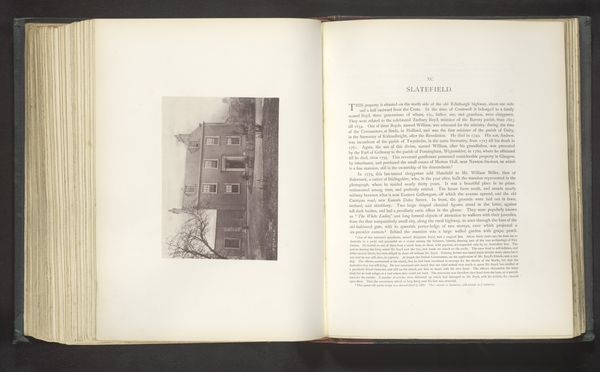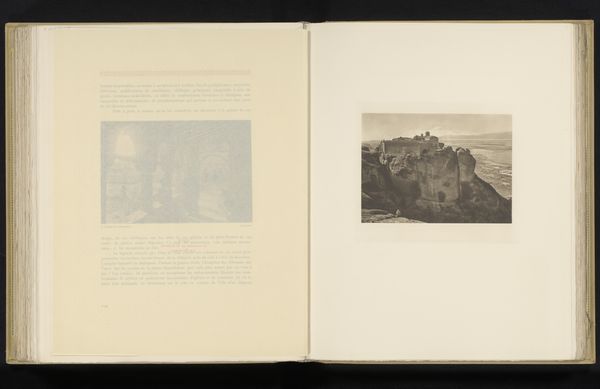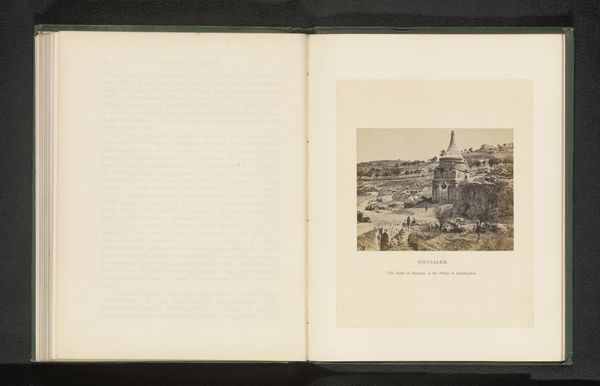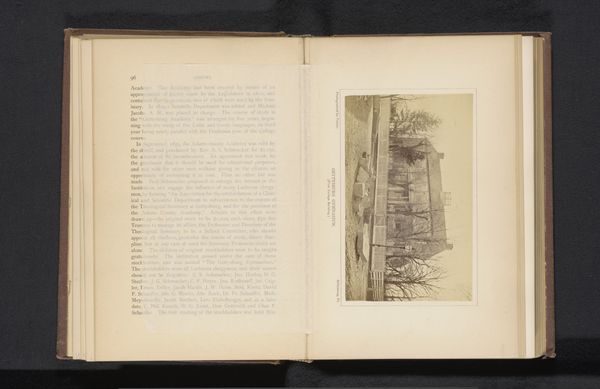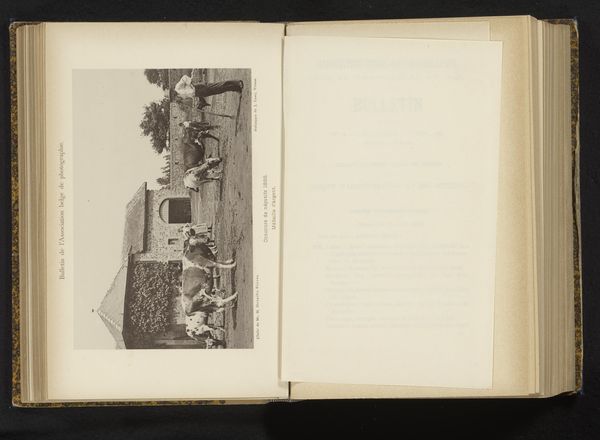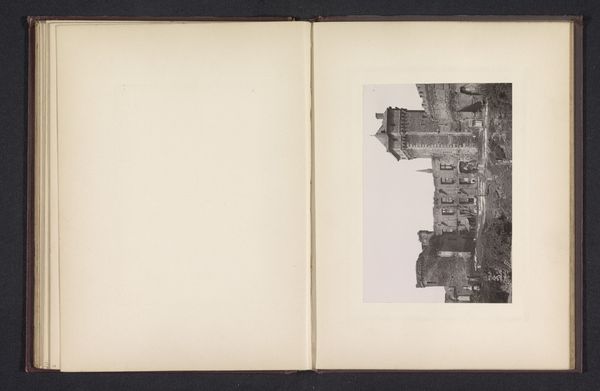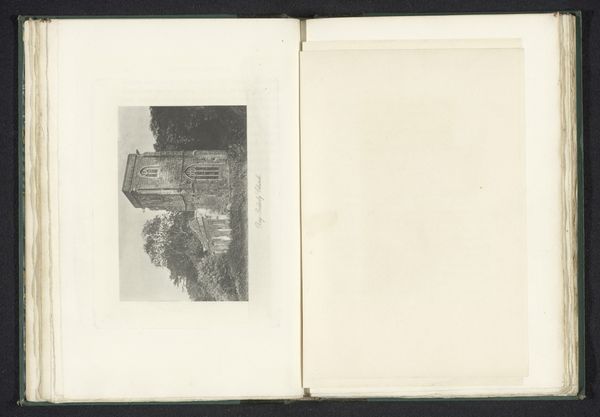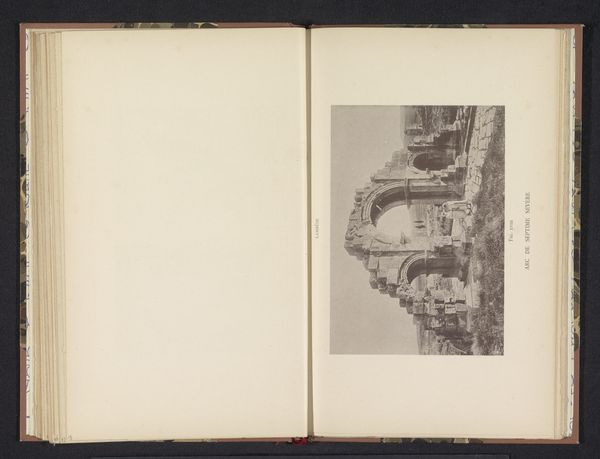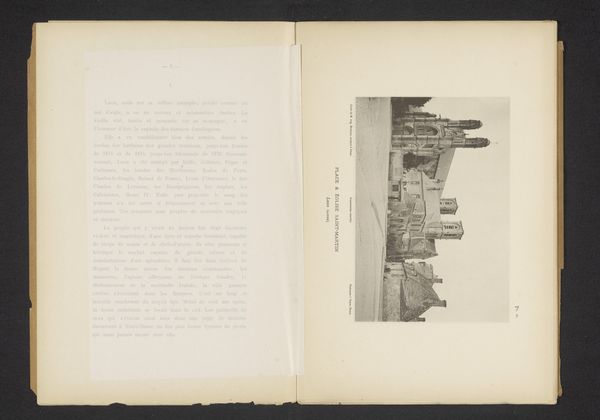
Dimensions: height 200 mm, width 120 mm
Copyright: Rijks Museum: Open Domain
Curator: Let's consider this photogravure before 1901, titled "Gezicht op Parijs," or "View of Paris" by Joseph Turner Keiley. It's mounted on a page in an album, an albumen print, and possesses a dreamy quality, almost like a fading memory. Editor: My immediate response is of stark contrast—the urban hustle of a European city filtered through a near-ethereal haze. It evokes a sense of both grandeur and isolation. Curator: Keiley, heavily influenced by Pictorialism, was fascinated by photographic printing processes and often experimented with them to produce images with painterly qualities. This particular work stands out for its almost palpable paper quality, suggestive of craft. We need to acknowledge the process involved—the creation and manipulation of the negative, the selection of paper, the choices made during printing, all of which determine the final form of the work. Editor: Indeed. And by layering photographic technology with visual language echoing painting and printmaking, Keiley interrogates boundaries around artmaking—specifically what constitutes art. This was made before 1901: a time of widespread change, massive shifts in the art market and major political upheavals. How do we understand this picture's relationship to industrial modernity, class tension and increasing globalization? Curator: I'd argue that its dreamy effect allows us to ponder the artist's hand and involvement. One can really study the layering. He transforms the image into something intensely personal, reflecting his unique perspective and physical and mental effort. I also feel we shouldn’t underestimate Keiley's social circles either; many of his fellow artists in New York also expressed similar feelings about urban expansion and industrial manufacturing at this time. Editor: That emphasis on handcraft reminds us of labor—whose labor is valued? How does Keiley’s artistic process address the wider cultural landscape, perhaps responding to debates around artistic value at that historical juncture? He's also positioning himself within specific dialogues around urban development. In essence, the aesthetic is inherently intertwined with Keiley’s perception and the cultural landscape of the time. Curator: Absolutely, the context in which the art exists is also what defines its impact and continuing role. Understanding it now gives the work additional interpretive possibilities. Editor: Precisely, recognizing its potential meanings now enhances both art and engagement in the modern era.
Comments
No comments
Be the first to comment and join the conversation on the ultimate creative platform.
